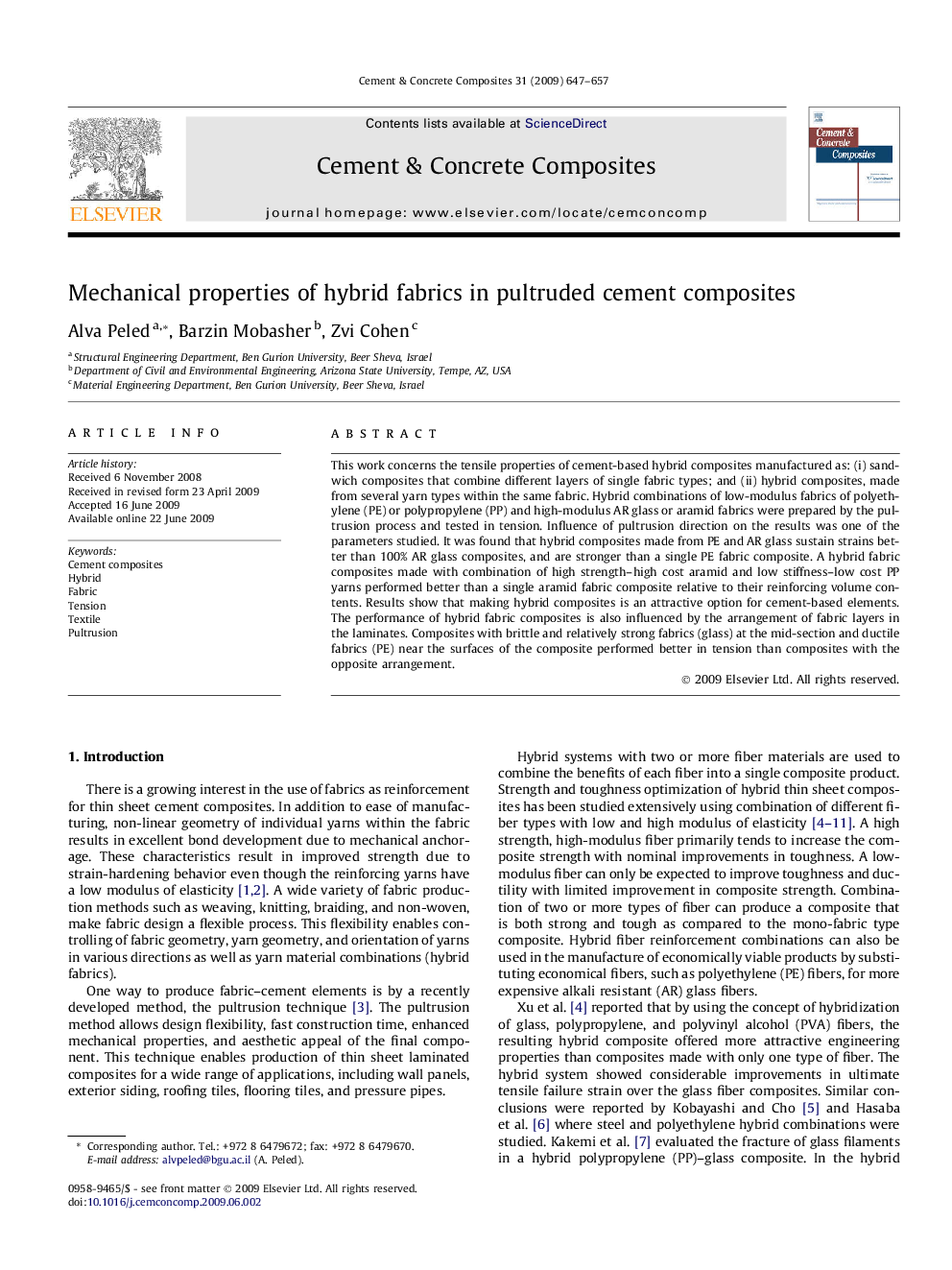| Article ID | Journal | Published Year | Pages | File Type |
|---|---|---|---|---|
| 1455444 | Cement and Concrete Composites | 2009 | 11 Pages |
This work concerns the tensile properties of cement-based hybrid composites manufactured as: (i) sandwich composites that combine different layers of single fabric types; and (ii) hybrid composites, made from several yarn types within the same fabric. Hybrid combinations of low-modulus fabrics of polyethylene (PE) or polypropylene (PP) and high-modulus AR glass or aramid fabrics were prepared by the pultrusion process and tested in tension. Influence of pultrusion direction on the results was one of the parameters studied. It was found that hybrid composites made from PE and AR glass sustain strains better than 100% AR glass composites, and are stronger than a single PE fabric composite. A hybrid fabric composites made with combination of high strength–high cost aramid and low stiffness–low cost PP yarns performed better than a single aramid fabric composite relative to their reinforcing volume contents. Results show that making hybrid composites is an attractive option for cement-based elements. The performance of hybrid fabric composites is also influenced by the arrangement of fabric layers in the laminates. Composites with brittle and relatively strong fabrics (glass) at the mid-section and ductile fabrics (PE) near the surfaces of the composite performed better in tension than composites with the opposite arrangement.
